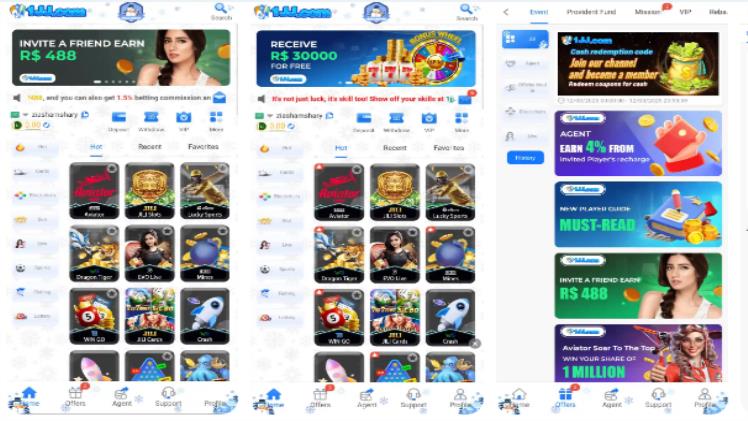Are Loyalty Program Benefits The Same For All Players?
Loyalty Program Structure:
Usually running on a set framework, loyalty programs provide advantages depending on degrees of participation. Many initiatives apply a tiered approach, so consumers who spend more or participate more often get better benefits. A basic membership could provide little savings or occasional prizes, for instance; elite members enjoy special promotions, priority treatment, or individual extras. This method guarantees that companies may reward their most important clients and yet offer entry-level benefits to casual users.
Rewards And Tier-Based Membership
The tier structure is among the most often occurring elements separating the advantages of loyalty programs. Most loyalty programs classify consumers according to spending behavior and degree of activity. Usually, lower-tier members get generic advantages including access to basic specials or little discounts. Higher-tier users, on the other hand, sometimes receive premium incentives including faster point accrual, more options for redeeming points, and special event access. Different tiers mean that loyalty benefits are not equal across all players; higher-tier members get far more value.
Spending And Engagement Affective Influence
The amount a player king999 spends or the degree of participation they keep inside the program determines loyalty incentives most of the time. Many loyalty programs are set up to give top perks to frequent, high-spending consumers. This can call for invites to special events, cashback incentives, or more reward point multipliers. Those that engage more actively or make bigger purchases often get preferential treatment, so their experience is quite different from that of occasional users. This system guarantees that companies may provide something to casual users yet also help their most committed employees develop client loyalty.
Customized Rewards Based On Customer Information
Data analytics is often used in modern loyalty programs to customize benefits to particular consumers. This means that a player’s choices, purchase behavior, and involvement patterns will greatly affect the advantages. Certain systems guarantee that consumers get rewards most relevant to them by including tailored promotions depending on historical behavior. A frequent traveler might get additional points for booking flights, for instance; a consumer who routinely buys gadgets could be given discounts on tech items. This tailored approach highlights even more the advantages experienced by several members of the same loyalty club.
Local And Market Variations
Geographic location of the player also affects rewards of loyalty programs. Certain loyalty programs change their offers depending on regional markets; some nations or locations get special advantages. In a highly competitive market, for example, a loyalty program can offer consumers extra advantages to inspire retention; in a less competitive area, participants may get less perks. Furthermore influencing the formation of loyalty programs are local rules, economic situation, and consumer behavior, which results in differences in the benefits given to participants in different areas.
VIP And High-Spending Member Exclusive Perks
Many loyalty programs award VIP members or high rollers specific benefits. Usually including premium experiences, tailored concierge services, or invitations to private events, these special advantages can Faster customer service, better redemption rates, or preferred booking choices are other benefits VIP members could find. Standard and premium loyalty members differ clearly since not all members have these advantages. Usually the main gainers from these special offers are high-spending consumers, therefore highlighting the fact that rewards of loyalty programs vary depending on the player.
Time-Limited Specials And Seasonal Promotions
Loyalty programs also bring seasonal incentives or time-sensitive promotions not accessible to every member equally. For instance, whilst new members might be given sign-up bonuses, long-term members could have early access to seasonal discounts. Certain programs give consumers who have been active for long stretches anniversary gifts or milestone-based rewards. These promotions help to explain the differences in loyalty advantages among different participants since they are often customized to different sectors of the clientele.
The Value Of Customer Comments And Exclusive Invitations
Benefits of loyalty programs can be determined in part by customer feedback. While creating their rewards programs, several companies consider consumer preferences and grant special benefits to those who offer insightful comments or answer questionnaires. Furthermore reserved for long-standing or high-tier members are exclusive invites to beta tests, product introductions, or loyalty-exclusive events. These selective chances imply that some players get different benefits depending on their degree of brand interaction outside of their financial capacity.
Variations In Redemption Options
Although loyalty programs sometimes provide a variety of redemption choices, a player’s level within the program will affect the availability of these prizes. While elite members may have more flexible alternatives such travel upgrades, premium merchandise, or cash conversions, basic members may be limited to typical redemption choices including minor discounts or predetermined prizes. Higher-tier members of several redemption programs gain noticeably more value from the program than lower-tier members because of their exclusivity.
Program-Specific Restrictions And Limitations
Loyalty programs set constraints and limits that could lead to differences in advantages even while they seek to honor consumers. Certain programs feature reward point expiration restrictions, therefore favoring those who actively use their points over casual users who amass them over time. Furthermore, many promotions could have a minimum spending requirement, therefore barring members who spend less from getting particular benefits. These built-in limitations underline even more the reality that loyalty advantages are not exactly comparable for every participant.
Conclusion
The benefits of loyalty programs are hardly uniform for every person. Different elements influence the variability in rewards across players: tier-based membership, spending patterns, personalization, regional variations, and exclusive VIP benefits. Although these initiatives seek to inspire customer loyalty and involvement, they finally give those who help the company most top priority. Knowing these differences lets consumers maximize their loyalty memberships by choosing programs fit for their degree of expenditure and involvement. Players should concentrate on optimizing the benefits inside their favorite loyalty programs instead of expecting identical benefits.







